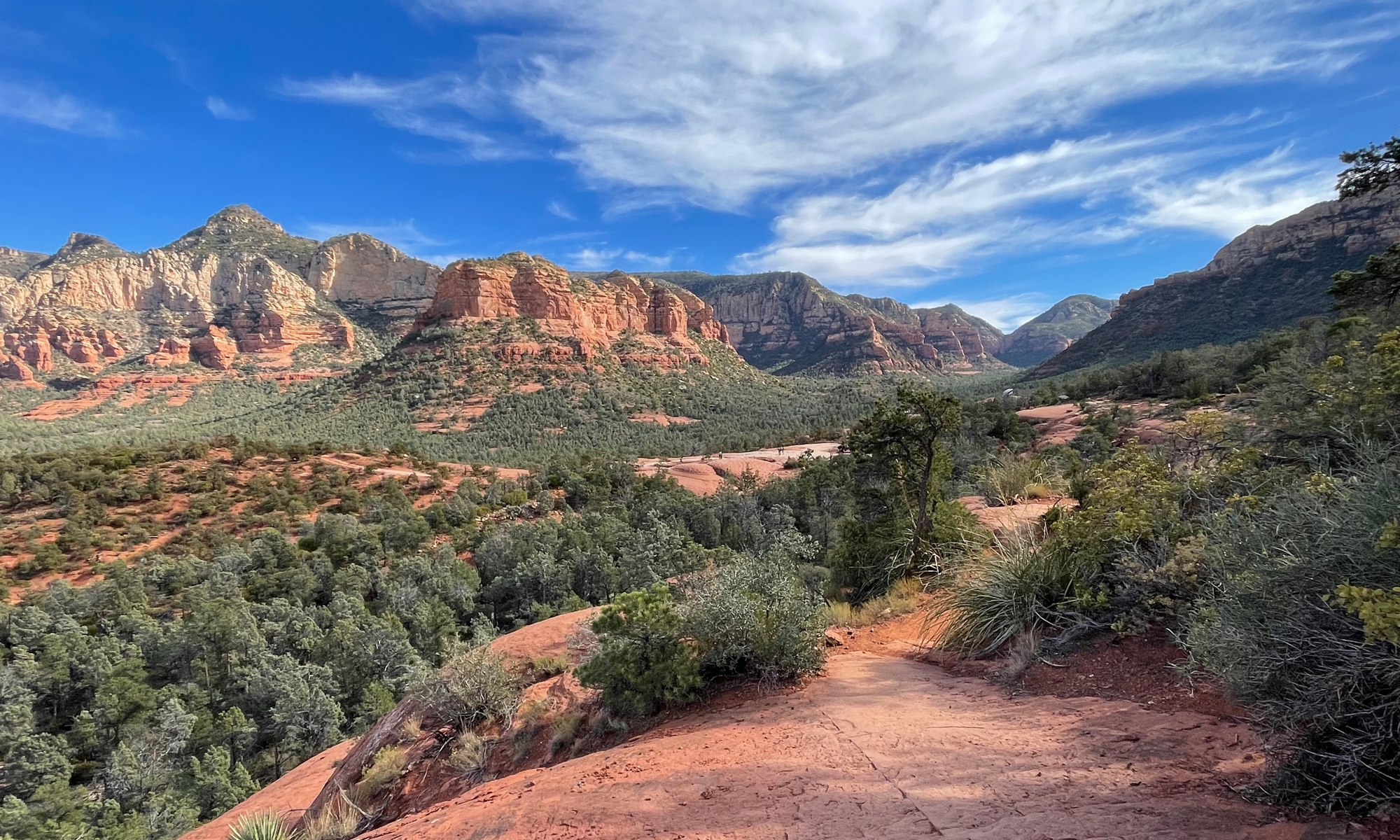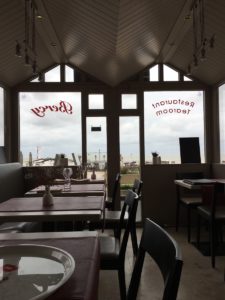
I freely admit that I am easy to entertain. It doesn’t take much to make me laugh. Hubby pretends to be above silliness most of the time, but, lately, he’s been enjoying googly eyes, though, and he sometimes does other stuff, like happily make goofy faces for pictures, that convinces me his inner silly-boy is struggling to be set free.
During our last trip to Belgium, when we went specifically to see Annelies and Yves’ new house and “just” visit with them, as opposed to gallivanting together to some other destination(s) as we had on previous vacations, we took a little day-trip to give our friends a break from unpacking/organizing. They’d only officially moved in about five days before we arrived.
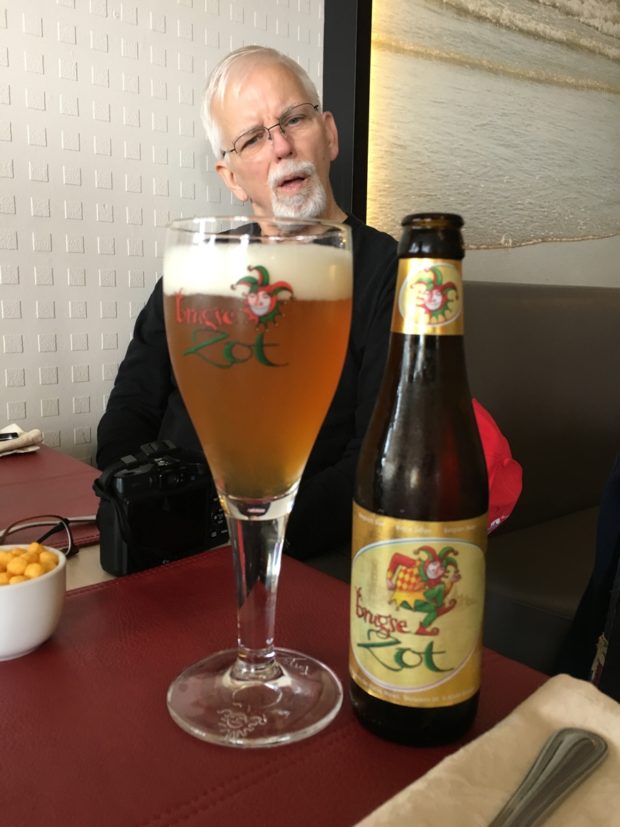
One of the things I’d always wanted to do was see a Belgian beach town. I know that beach towns in the UK are nothing like American beach towns. Annelies told me that their beach towns are not really very picturesque, But I wanted to see for myself. So we went to Knokke Beach.
It was early Thursday, October 5. The latitude of Knokke Beach is 51.35′, which is pretty far north. In North America, the rough equivalent to that latitude on the Atlantic side would put us around the northern tip of Newfoundland Island. On the Pacific side, that would put us well north of Vancouver Island. So it was cold. Windy, too, unfortunately.
After strolling around a bit, we were all freezing and hungry, so we ducked into that cute cafe for lunch. I left the table to find the toilet, leaving my phone behind. Later, I discovered that husband of mine had taken a couple of pictures while I was away, enlisting the help of our friends in his shenanigans.
Those pics made me giggle, so I decided to share them with you.
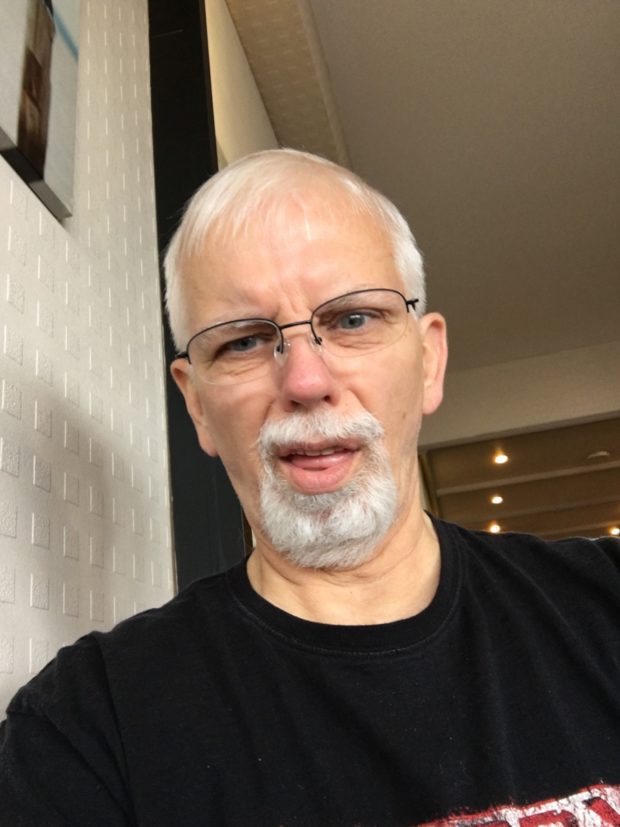
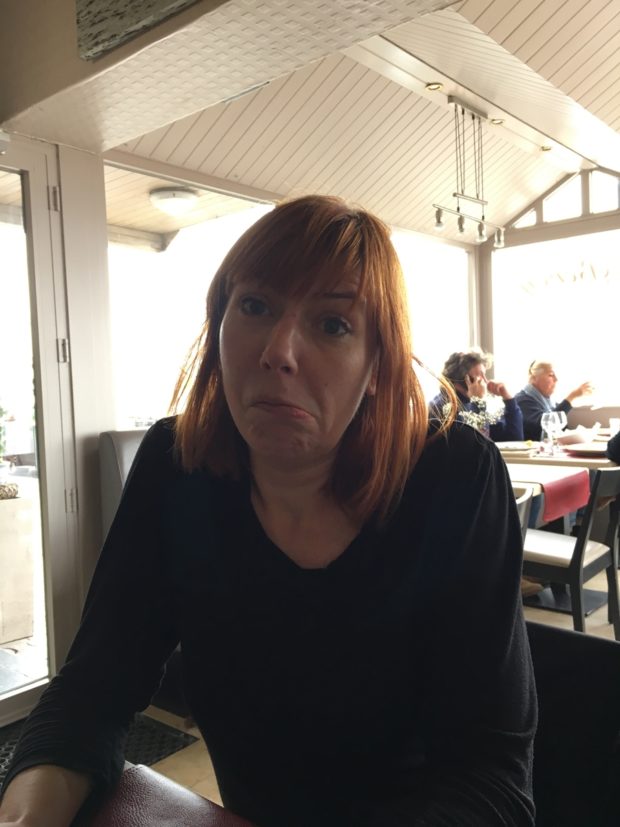
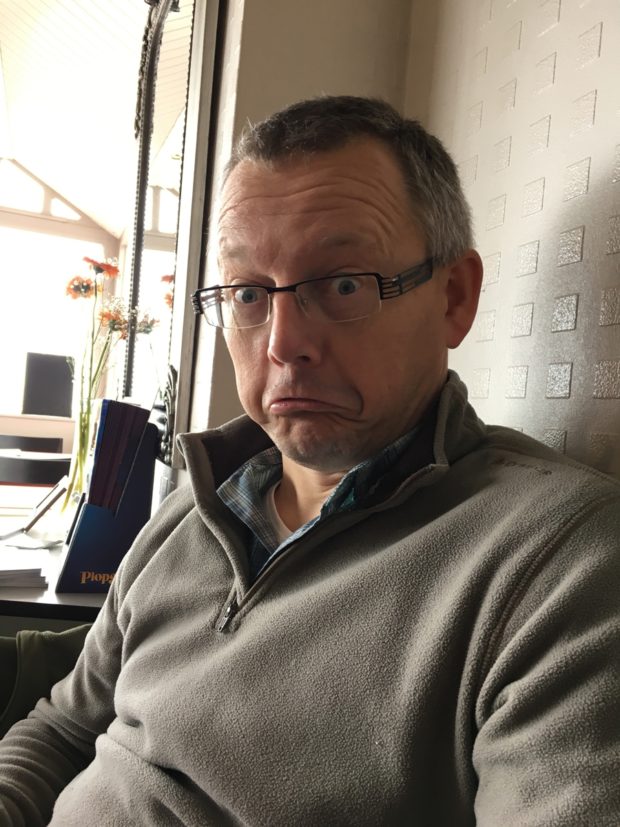
Funny, right? Our friends have their own silly side!
I am, and have always been, the picture-taker. Annelies takes a lot of pictures, too, but I’m usually the one that makes people pose next to interesting stuff or in certain spots for pictures. And it’s always me who has the selfie-stick, if I remember it, and long arms if I don’t.
On the day we drove to Knokke (pronounced like kuh-no-kuh), we also stopped in the town of Sluis (pronounced like slew), which is in the Netherlands, just so we could say we’d gone to the Netherlands, too. We’d only driven through that country previously, and had once briefly visited the spot where Belgium, the Netherlands, and Germany meet.
I was delighted to see they had a cow statue.
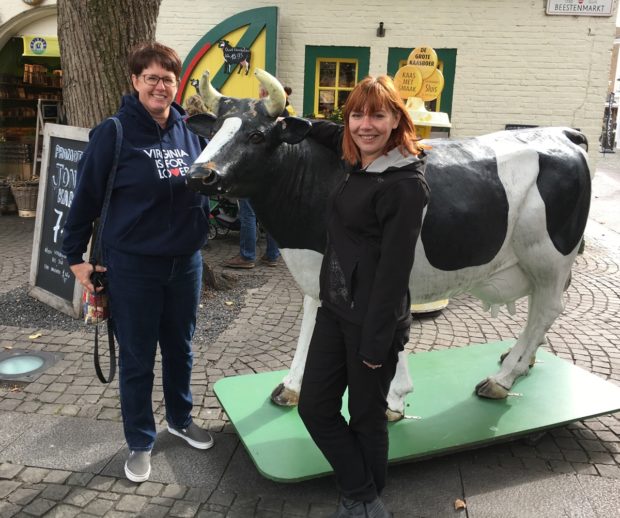
In Sluis, there was also a windmill. Nothing says “we visited the Netherlands” like a photo with a windmill, right? That cow photo could have been taken anywhere.
The conversation probably went something like this…
“Oooh, look. A windmill! We HAVE to get a group photo with the windmill!” I probably said.
The group would have groaned collectively and Annelies would’ve said something like, “A windmill? Really? Why?”
“What do you mean why? Everyone knows windmills are synonymous with the Dutch!” I probably said, by “Dutch” meaning inhabitants of the Netherlands or the country itself, not speakers of the Dutch language.
“Should we all buy clogs, too?” she may or may not have asked, sarcastically.
I would have already been seeking the perfect spot by that point while they chatted amongst themselves, good naturedly (I think) bitching about this weird photo thing I always subject them to, cracking jokes about the number of pictures I take, Mike again remarking how much money we saved when we switched from film to digital images, etc.
“Okay, here’s a good spot,” I would have said, pretending to ignore their complaining. “Annelies, stand there. Mike, get next to her. Yves, beside Mike or in the rear.”
“Where will you stand?” Yves would have said, pretending to be concerned about getting me in the frame while secretly plotting the optimal spot for him to stand while making photo-bomb faces, or doing something else unusual.
Here are some of the lovely images we ended up with that day…
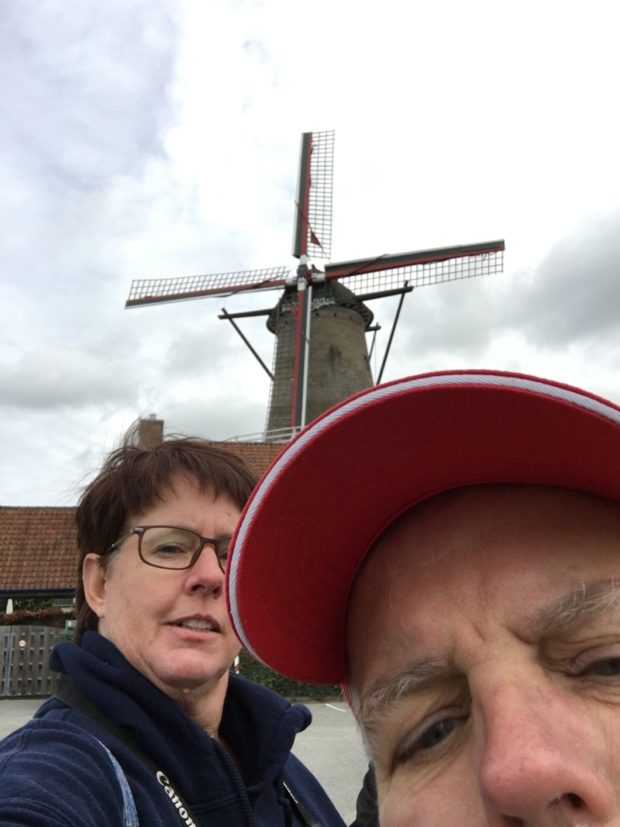
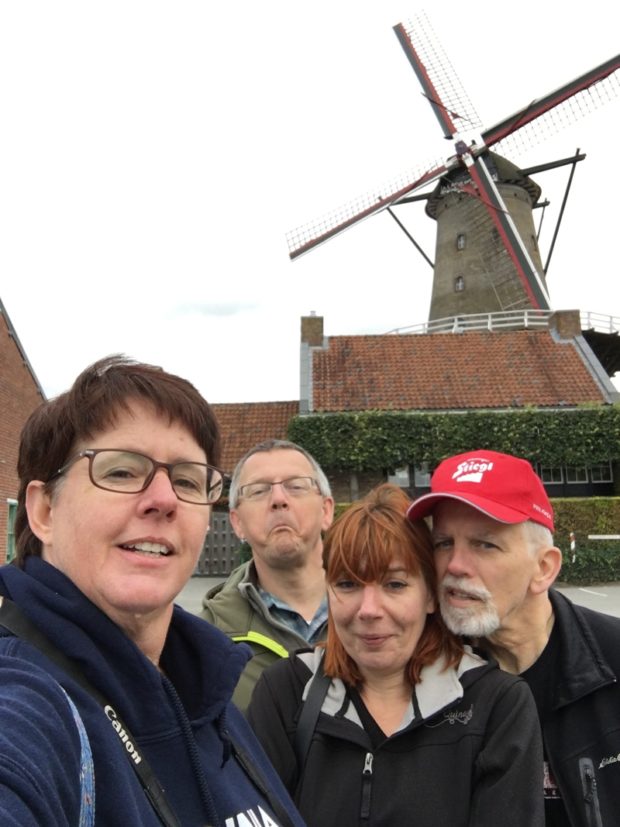
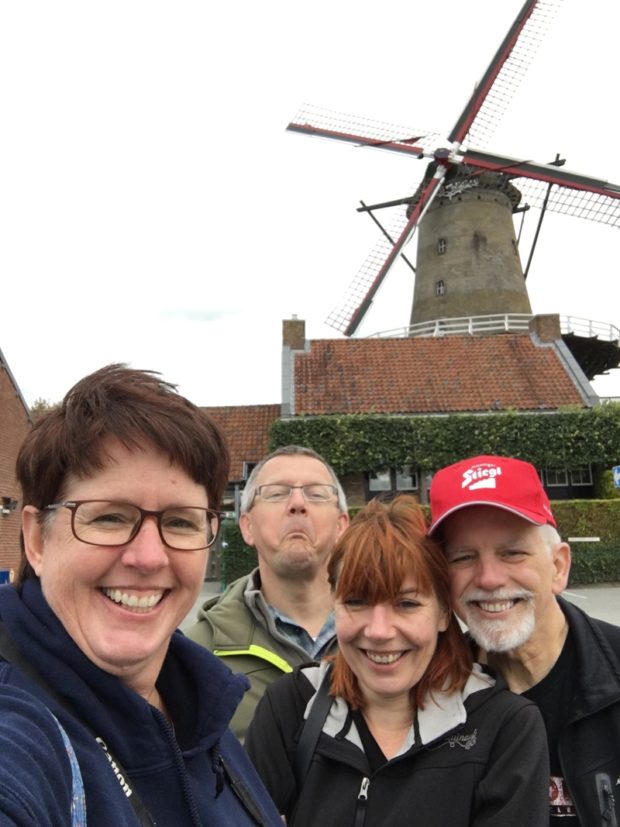
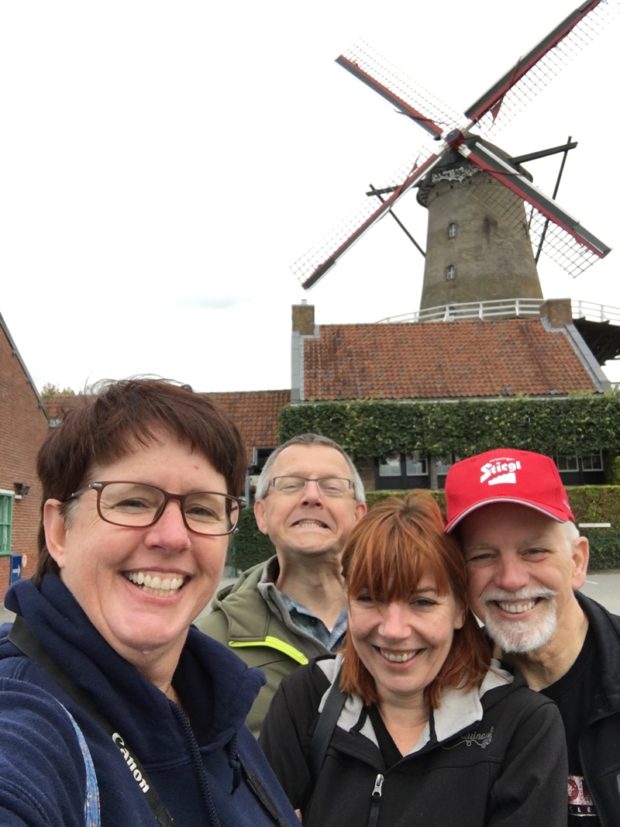
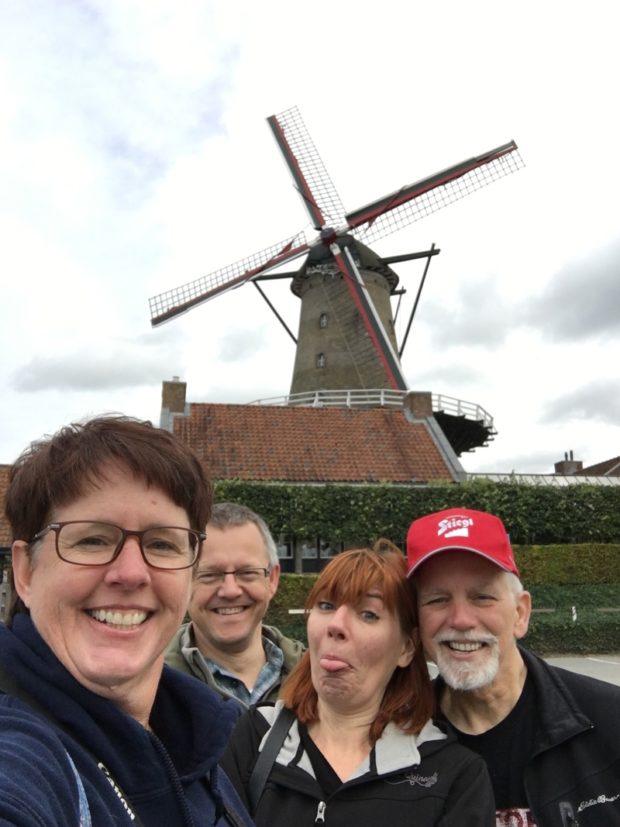
We never did end up with one where we are all smiling normally, but that’s okay. Images like this have become “classic” group photos, marking the various holidays we’ve enjoyed together.
Here are a few of the others…
First, from Capitol Reef National Park in Utah, taken in September 2011.
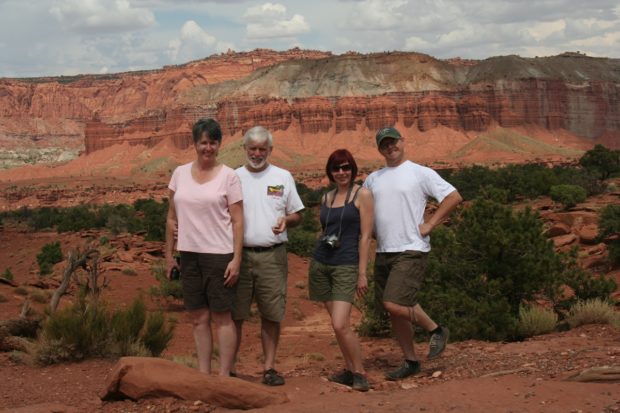
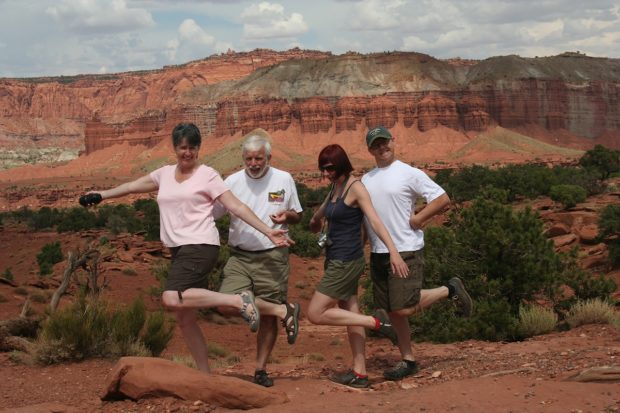
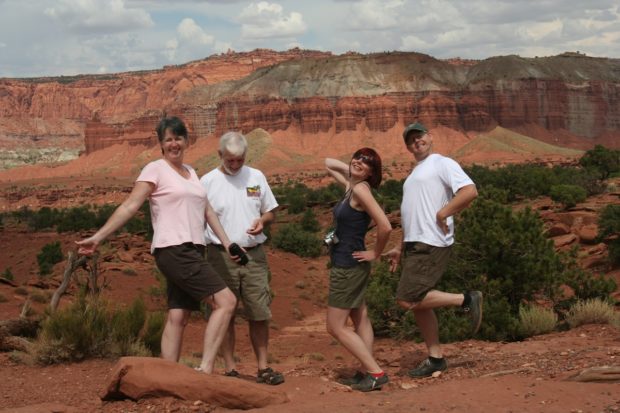
There’s usually a story behind the pics, too, but I won’t bore you with those details. It’s just significant to the four of us, and seeing these images instantly brings it all back.
Here are a few more of my personal favorites, from Kutna Hora, Czech Republic in September 2016.
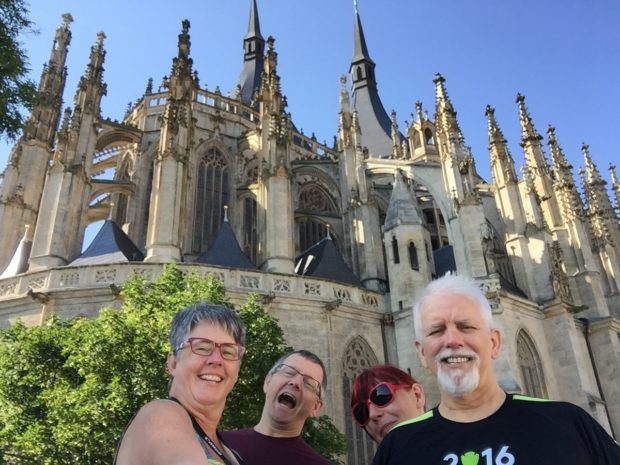
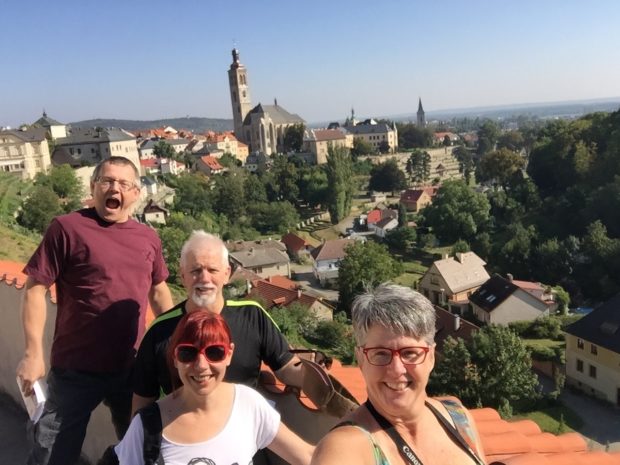
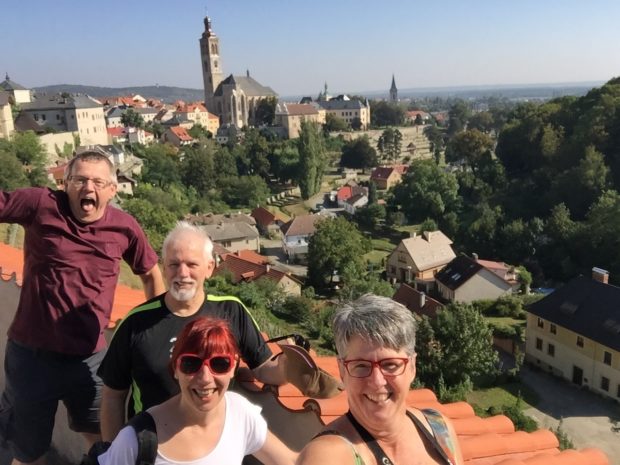
There are MANY more. It would take me hours to find them all.
I’ll end this post with an image that still holds the record for Annelies’ best photo-bomb ever!
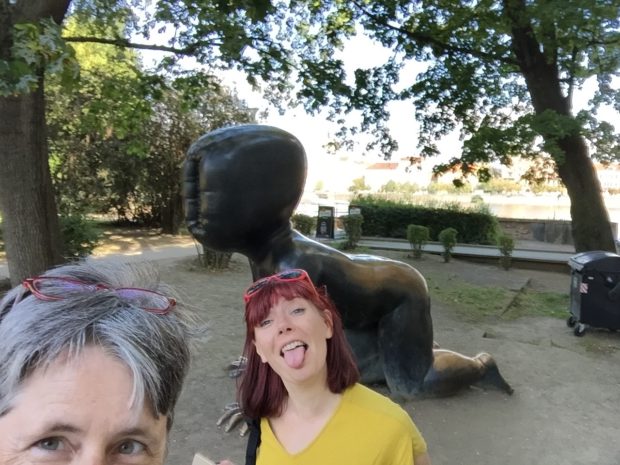
Posing for photos may sometimes seem tedious, but I have found that it’s almost always worth it in the end. For me, anyway.
